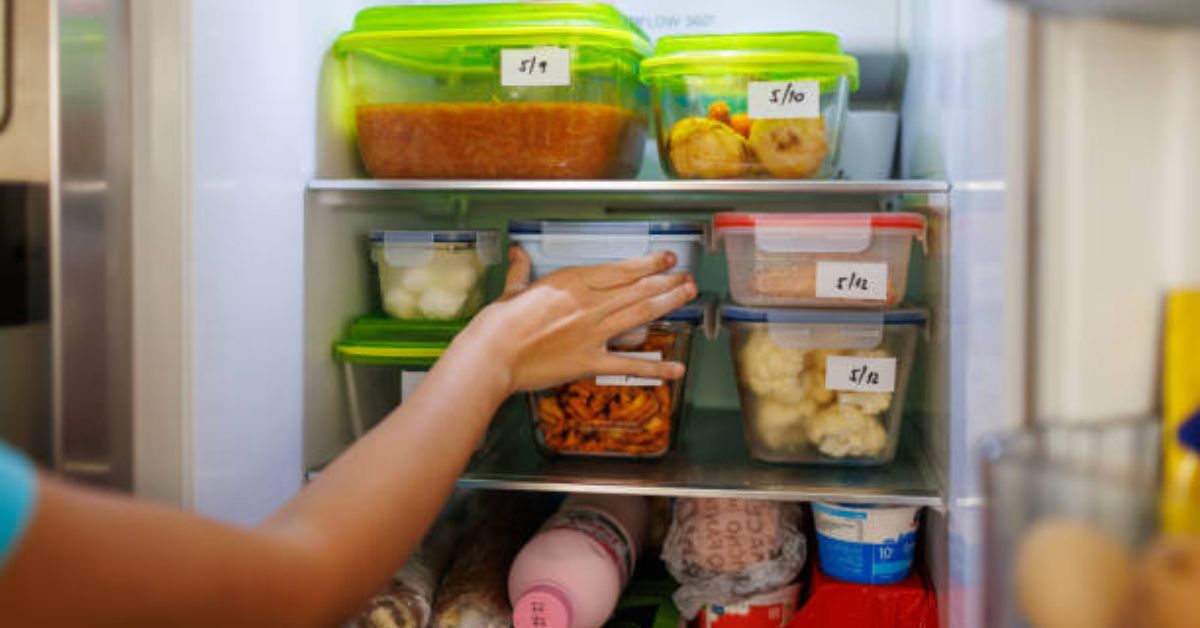Freezing food is one of the most efficient and cost-effective ways to preserve leftovers, save money, and reduce food waste. It allows families to prepare meals in advance, store seasonal produce for later use, and buy items in bulk. However, while the freezer may seem like a simple tool, using it improperly can lead to food spoilage, flavor loss, and even health risks. Many people unknowingly make mistakes that reduce the quality of frozen food or compromise food safety altogether.
Understanding the common mistakes made during freezing and learning how to avoid them can go a long way in ensuring your meals taste fresh, last longer, and remain safe to eat. This guide outlines the top 10 freezing mistakes to avoid at home and offers expert advice on the best freezing practices to keep your kitchen efficient and your food fresh.
RELATED: Top 15 Kitchen Tools That Make Freezing and Preserving Easy
Top 10 Mistakes to Avoid When Freezing Food at Home
Learn how to store food safely and extend its shelf life with these essential freezing tips for every home cook.
1. Freezing Food While It’s Still Hot
One of the most frequent mistakes is placing hot food directly into the freezer. Doing this can raise the internal temperature of the freezer, which affects other items already stored inside. Additionally, freezing food while it’s still warm can lead to the formation of ice crystals, which degrade the texture and flavor over time.
To avoid this issue, always allow hot meals to cool at room temperature (no longer than two hours) before transferring them to the freezer. You can speed up the cooling process by portioning the food into smaller containers or placing the container in an ice bath.
2. Using the Wrong Containers or Packaging
The container or wrapping you use is just as important as the freezing process itself. Using containers that aren’t airtight can result in freezer burn, which occurs when air dries out the surface of the food. Plastic wrap alone, for instance, is not always enough to prevent moisture loss or contamination.
Invest in high-quality, freezer-safe containers, resealable freezer bags, and vacuum-seal machines if possible. Ensure all packaging is airtight and, where appropriate, double-wrap items like meat or bread for maximum protection.
RELATED: 15 Common Cooking Mistakes and How to Avoid Them
3. Not Labeling or Dating Frozen Food
It’s easy to toss containers into the freezer and forget about them until it’s too late. One of the key steps in food preservation is proper labeling. Without labels, you may not remember what the item is, when it was frozen, or how long it’s safe to keep.
Use waterproof markers and freezer-safe labels to note the food type and freezing date. Follow freezer storage guidelines: for example, cooked meats typically last 2–3 months, while frozen vegetables can last up to 12 months.
4. Freezing Items in Large Batches
While freezing large quantities of food may seem efficient, it can slow down the freezing process. When the food doesn’t freeze quickly, larger ice crystals form, leading to mushy or unappetizing textures when thawed.
Instead, divide food into smaller portions before freezing. This not only ensures faster freezing but also makes it easier to defrost just what you need, saving time and reducing waste.
RELATED: How to Freeze Fruits and Vegetables Without Losing Flavor
5. Overloading the Freezer
Stuffing the freezer to capacity may sound like a smart use of space, but it can hinder airflow and prevent food from freezing evenly. An overpacked freezer works harder to maintain its temperature, leading to energy waste and inconsistent freezing.
Organize your freezer with bins or containers to maximize space while allowing for good air circulation. Leave a bit of space around items so cold air can flow freely and maintain optimal freezing conditions.
6. Freezing Foods That Don’t Freeze Well
Not all foods are suitable for freezing. Items with high water content like lettuce, cucumbers, or cream-based sauces, tend to separate or become soggy once thawed. Freezing them can lead to wasted food and disappointment when it’s time to use them.
Before freezing any item, research whether it freezes well and consider how you plan to use it later. Some foods—such as dairy, eggs, or certain fruits may need special handling or should be avoided altogether.
7. Neglecting to Blanch Vegetables Before Freezing
Blanching is the process of boiling vegetables briefly and then shocking them in ice water. This step is crucial because it helps stop enzyme activity that can cause spoilage and color loss, even in the freezer.
Vegetables like broccoli, carrots, and green beans benefit significantly from blanching. Skipping this step can result in poor texture, dull color, and reduced flavor when it’s time to cook them.
8. Not Removing Air from Bags and Containers
Air is the enemy of frozen food. Excess air in packaging leads to oxidation and freezer burn, which impacts flavor and texture. It’s a common mistake to simply zip up a bag or close a container without removing the trapped air.
For soft items, press the air out of freezer bags before sealing. Better yet, use vacuum sealers if available. For liquids like soups or sauces, leave some room at the top of the container for expansion, but still aim to minimize air contact.
9. Defrosting Food at Room Temperature
Leaving frozen food on the counter to thaw may seem convenient, but it is a risky practice. As the food warms, harmful bacteria can multiply on the surface even if the inside remains frozen. This poses serious food safety risks.
Instead, thaw food safely by placing it in the refrigerator, using the microwave’s defrost function, or submerging it in cold water (changing the water every 30 minutes). These methods help maintain safe temperatures and reduce the risk of foodborne illnesses.
10. Keeping Frozen Food Too Long
While freezing extends the shelf life of most foods, it doesn’t preserve them indefinitely. Over time, even well-frozen foods can lose flavor, texture, and nutritional value. Relying on outdated freezer items can result in unappetizing meals or wasted ingredients.
Keep a freezer inventory and rotate items regularly using the “first in, first out” rule. Use older items before newer ones, and toss anything with visible freezer burn or an off smell after thawing. Follow USDA guidelines for maximum freezer storage times for various food types.
Bonus Tips for Better Freezing
While avoiding the above mistakes is crucial, there are additional food storage hacks and freezing tips that can improve your kitchen routine:
- Flash Freeze Before Bagging
Items like berries, chopped vegetables, or cookie dough can stick together if frozen in a pile. Spread them on a baking sheet and freeze individually before transferring to a container. This prevents clumping and makes it easier to use single servings.
- Freeze in Flat Layers
Soups, sauces, and casseroles freeze well when spread flat in freezer bags. Lay the bag flat until frozen, then stack them like file folders. This not only saves space but also allows faster thawing when needed.
- Use Ice Cube Trays for Sauces or Herbs
Freeze pesto, broth, lemon juice, or fresh herbs in ice cube trays. Once frozen, pop them out and store in a bag. This gives you quick access to small portions for cooking without thawing an entire batch.
Conclusion
Freezing food is a powerful tool in every home kitchen, but it’s not as simple as tossing leftovers into the freezer. Small mistakes, like using the wrong containers or forgetting to label items, can make a big difference in taste, texture, and safety. By understanding and avoiding these common freezing mistakes, you can preserve food more effectively, reduce waste, and make meal planning easier and more affordable.
Whether you’re batch cooking for the week or saving seasonal produce for the months ahead, following proper freezing techniques ensures that your food stays flavorful, nutritious, and safe to eat. Take the time to do it right, and your freezer will become a valuable ally in your healthy, organized kitchen routine.









